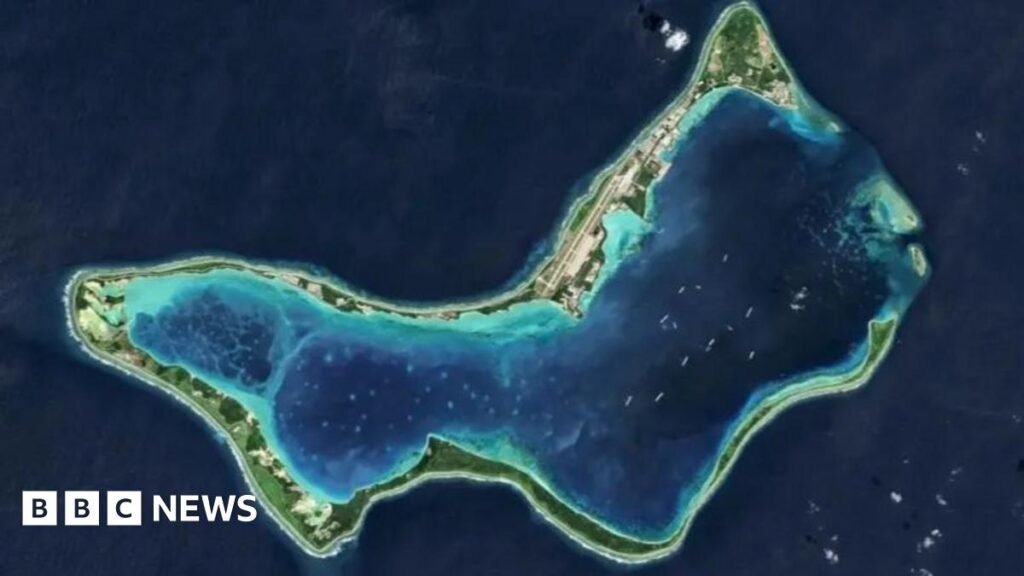But as time went on, says Shanti, the feeling of helplessness grew.
Life in the camp had to exist in a bubble, with news of major wars breaking out in Ukraine and the Middle East trickling in from guards watching the migrants, but they were kept away from the base and absorbed in their own lives.
Access to the island, which is part of the Chagas archipelago, is highly restricted. It has not officially had a permanent population since the early 1970s, when Britain evicted all the people who lived there so it could develop a strategic base.
“From day one until we left, we lived with rats every day,” says Shanti. “Sometimes the rats would bite our children – on the legs, fingers and hands. They would steal our food. Sometimes at night they would crawl on our blankets and on our heads.”
Giant coconut crabs and tropical fire ants also crawled into the camp.
During storms, rainwater poured through holes into tents previously used for Covid patients during the pandemic.
When United Nations researchers visited the camp late last year, the children told them they dreamed of going on a picnic, riding a bike or eating ice cream.
At one point earlier this year, a medical official described the camp as a “total crisis”, with widespread self-harm and suicide attempts.
“My daughter watched everything that happened. She said, “Mom, they cut themselves. Shall I cut myself?” So I would say, ‘No, I can’t protect you, come and get the paper,'” she recalls through tears.
Both she and her husband cry as they talk about how their daughter has self-harmed twice.
“Both times I felt really bad and couldn’t accept it. When she did it, she told me she did it because she hoped that if she died, her parents and her brother would go to a safe third country,” says Shanti.

